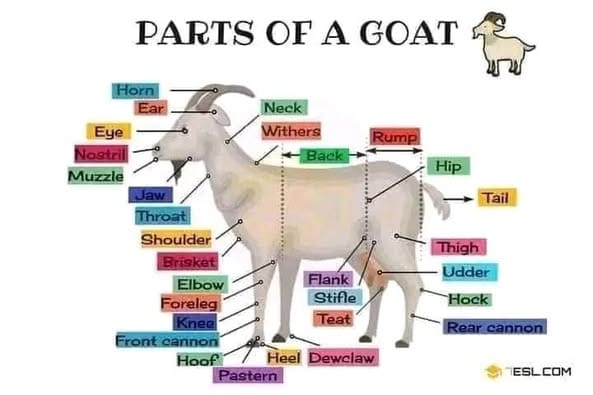
Here are the parts of a goat, along with their uses:
- Horn: Used for defence and dominance displays.
- Ear: Provides hearing; helps in communication.
- Eye: Essential for vision; helps in navigation.
- Nostril: Aids in smell and breathing.
- Muzzle: Helps in grasping food.
- Jaw: Allows for chewing and grinding food.
- Throat: Pathway for air and food.
- Shoulder: Supports movement and strength.
- Brisket: Protects internal organs; provides structure.
- Elbow: Enables foreleg movement.
- Foreleg: Supports weight and movement.
- Knee: Allows bending of the foreleg.
- Front Cannon: Supports the weight of the goat.
- Hoof: Provides traction and support.
- Pastern: Absorbs shock during movement.
- Heel: Supports the hoof structure.
- Dewclaw: Provides stability and balance.
- Neck: Supports the head and facilitates movement.
- Withers: Allows for flexibility in the back.
- Rump: Supports movement and carries weight.
- Back: Provides structural support.
- Hip: Aids in movement and flexibility.
- Tail: Used for balance and signalling.
- Thigh: Important for powerful movement.
- Udder: Produces milk for offspring.
- Hock: Allows for bending of the hind leg.
- Rear Cannon: Supports hindquarters.
- Heel (hind): Provides support and stability.
These parts are crucial for the goat’s survival, movement, and reproduction.
